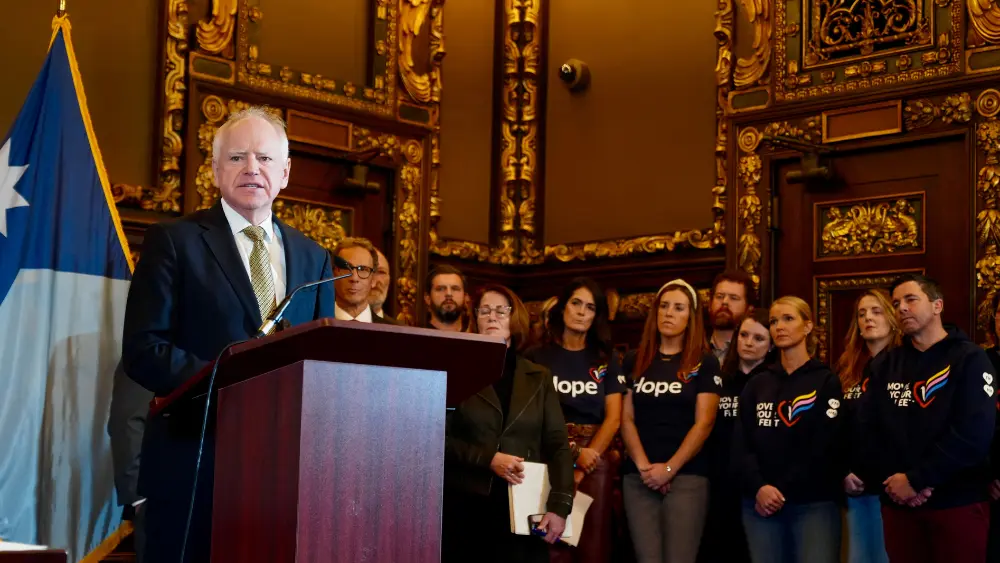(Tioga, ND) — North Dakota could be a major player in increased natural gas exports if the obstacles were removed. Those words coming from Lynn Helms, Director of the North Dakota Department of Mineral Resources.
Helms, appearing on KTGO Radio (AM 1090 / FM 92.7) said there are two main issues affecting potential exports; the lack of export terminals and the unwillingness of the federal government to allow for the oil drilling that produces natural gas.
Regarding export terminals, Helms says “We’ve got over a hundred-year supply of natural gas in this country. Our problem is we can’t build export terminals. The federal government and the coastal states just don’t want anything to do with it. Every export terminal that has been proposed off the shores of California, Oregon, and Washington has been turned down by the state and local authorities. So we don’t have access to the Pacific.”
He says the East Coast outlook isn’t much better. “I think there’s only one proposal out of the Northeast, which is not nearly enough to handle all this excess gas. So all of our export terminals that are being capitalized and built are in the Gulf of Mexico, which means all natural gas has to somehow flow south to get on the water.”
Ron Ness, President of the North Dakota Petroleum Council, in an interview with The Farmer said the potential for revenue is massive if North Dakota producers can get their product to the coasts. “We are awash with natural gas, and of course, you look to Europe and other places that were getting natural gas from Russia, they are hungry and eager for our natural gas. The natural gas commodity prices in Europe are through the roof, crushing their economy, and of course, Asian countries are incredibly hungry for natural gas, but getting natural gas out to the Pacific Northwest, permitted through pipelines in those states is extremely challenging.
Helms says another major concern is that current federal policy has limited drilling in oil-producing states.
“We’ve got to start with the approximately 800 federal mineral parcels that have been nominated by operators in Western North Dakota. Over the last 13 years there are about 800 parcels that are just hanging out there that have not been offered for lease. And obviously those are in highly productive areas. I do have to feel good that we’re going to have a lease sale finally, in June. We’ve only had one lease sale since the Biden administration took charge and basically put a pause on all federal leasing for fluid minerals. But in June it looks like they’re going to offer 52 parcels.”
Ness says if they can get those parcels into production, the natural gas will come along for the ride. “In addition to the oil, you get this extremely liquid-rich natural gas and we’ve spent over $20 billion to develop that infrastructure. But you’ve got to process that gas, find a market for that gas, get it in a pipeline to the processing plant, and then from the processing plant to a market somewhere. I believe it’s probably the key to the next economy of North Dakota. That liquid natural gas has butane, propane, ethane, and of course just the regular methane that we all use to fuel our fireplaces and gas stoves and things in our house.”
The two leading 2024 Republican presidential candidates support fossil fuel development. Florida Governor Ron DeSantis made repeated calls for increased oil drilling and transport when he announced his campaign last week, and former President Donald Trump, in a recent CNN Town Hall said the first thing he would do to bring down inflation would be to increase oil production.
“Drill, baby, drill,” said Trump. “We were energy independent. We were soon going to be energy dominant…We were going to be bigger than Russia and Saudi Arabia put together times two. We have more liquid gold under our feet than any other nation. And these stupid fools ended it…And that’s what started inflation. And it hasn’t stopped.”
The issue looms large as the election year draws closer. A report released Tuesday by the American Petroleum Institute, the leading lobbyist group for the oil and natural gas sector, showed Pennsylvania, Ohio and New York are three of the six states with the highest economic contributions from traditional energy sources. All three have pivotal House and Senate races set for 2024.
For all the criticism the Biden Administration has faced from industry officials, its Department of Energy is actually predicting double-digit growth in associated natural gas production (production that stems from oil drilling) because of three main trends. First, rising crude oil prices support increased production from tight oil formations with significant volumes of associated natural gas. Second, many oil wells are aging, and as these wells age, they tend to produce a higher ratio of natural gas relative to crude oil. And third, provisions in the Inflation Reduction Act of 2022 created penalties for venting and flaring methane, spurring producers to capture more natural gas from oil formations.
Helms says those efforts have paid off handsomely. “Companies really did a great job holding strong on that gas capture (in March) with 95% gas capture, even with the (recent) collapse in natural gas prices. The same technologies that people have been applying to our great oil wells here are being exercised in the Permian (West Texas and New Mexico), over in Pennsylvania, Ohio, as well as down in Arkansas. And so those natural gas wells are incredible.”
Domestic natural gas prices have fallen 75% from August of last year. “We are at prices as low as we saw in the third quarter of 2020, right during the height of the pandemic,” says Helms. Yet the state has made significant strides in gas capture. North Dakota’s 95% capture rate is up from the high-80’s less than ten years ago. And that’s led to what Helms says is a domestic oversupply, with natural gas storage levels almost 20% above normal. This stands in sharp contrast to the situation in Asia where limited supply has resulted in high prices. “Asian prices are tremendous. If we could get access to the West Coast (for exports), there’s no end to the market in Asia.”
Ness says the combination of high prices overseas and the strong supply in North Dakota makes for a powerful combination. “We produce nearly 3 billion cubic feet of natural gas a day in North Dakota. That’s just an off the charts number. On a national scale, we’re probably still ranked 15 or 16 because there’s just a lot of gas provinces…But yeah we’ve got a great resource in western North Dakota.”
Both Helms and Ness say that the facts about natural gas have been forgotten, by many, amid the political debate. “I don’t know why we can’t get people to see the light that this is the answer to lower carbon electric generation,” says Helms. “But it’s just a difficult sell. They’ve heard too much about fossil fuels, I think.”
Ness agrees. “Somehow natural gas has gone from what the world thought was the cleanest burning fuel of the future to now being demonized by the activists and the folks that just are opposed to all fossil fuels. And you’re seeing bans on natural gas stoves in cities like Seattle and states like New York, which to me, is just beyond ridiculous. They’re still using home heating fuel in their houses in New York. And of course, if you’ve got a (gas) fireplace in your house, a stove that runs on natural gas, or a furnace that runs on natural gas, you’ve got a pipeline from the street into your house. So, yes the anti-fossil fuels crowd is loud and disruptive and unfortunately it’s having an impact on our ability to build pipelines and move these commodities to market.”




